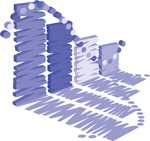Surveys and Data Collection Systems
National Health Interview Survey
Data Source and Methods: Personal Interviews
Selected Data Items:
- Health status and limitations
- Utilization of health care
- Health insurance
- Access to care
- Selected health conditions
- Poisonings and injuries
- Health behaviors
- Functioning/disability
- Immunizations
National Health and Nutrition Examination Survey
Data Source and Methods: Personal interviews, physical examinations, laboratory tests, nutritional assessment, DNA repository
Selected Data Items:
- Selected diseases and conditions including those undiagnosed or undetected
- Nutrition monitoring
- Environmental exposures monitoring
- Children’s growth and development
- Infectious disease monitoring
- Overweight and diabetes
- Hypertension and cholesterol
National Survey of Family Growth
Data Source and Methods: Personal interviews, men and women 15-44 years of age
Selected Data Items:
- Contraception and sterilization
- Teenage sexual activity and pregnancy
- Infertility, adoption, breastfeeding
- Marriage, divorce, and cohabitation
- Fatherhood involvement
National Vital Statistics System
Data Source and Methods: State vital registration, births, deaths, fetal deaths, linked birth/infant death program
Selected Data Items:
- Birth and death rates
- Birthweight
- Teen and nonmarital births
- Pregnancy outcomes
- Method of delivery
- Preterm delivery
- Multiple births
- Medicaid payment
- Breastfeeding
- Maternal weight
- Infant mortality
- Life expectancy
- Causes of death
- Occupational mortality
National Death Index
Data Source and Methods: State registration areas, death certificates
Selected Data Items:
- Facilitates epidemiological follow-up studies from 1979-2013
- Verification of death for study participants for health/medical research purposes only
- Optional release of coded causes of death available to users upon request
- NCHS surveys can be linked to NDI
National Ambulatory Medical Care Survey
Data Source and Methods: Review medical records for patient visits, interview physicians and community health center providers
Selected Data Items:
- Patient characteristics and clinical management
- Patient demographics, diagnoses, procedures and medications
- Provider/clinician characteristics, specialty, practice size, ownership
- Use of electronic medical records
- Lab values for cholesterol and measures of diabetes control
National Hospital Ambulatory Medical Care Survey
Data Source and Methods: Review medical records on patient visit, Interview hospital administrators
Selected Data Items:
- Patient characteristics
- Patient demographics, length of stay
- Diagnoses and treatment
- Facility characteristics
- Specialty, volume
- Use of electronic medical records
National Hospital Care Survey
Data Source and Methods: Linkage to NDI and CMS data, hospital billing (UB-04), records, electronic health records, and other abstracted medical records
Selected Data Items:
- Utilization of hospital care, inpatient care, and care delivered in EDs, OPDs, hospital-based and/or free standing ambulatory surgery locations
National Study of Long-term Care Providers
Data Source and Methods: Mail/web/telephone survey of directors of adult day care services centers and residential care communities, Administrative data from the CMS on nursing homes and residents, home health agencies and patients, and hospices and patients
Selected Data Items:
- Provider characteristics, services, practices (EHRs), and staffing
- Aggregated provider-level information on residents/participants/patients including demographics, Medicaid use, selected diagnoses, cognitive impairment, health status, physical functioning, hospital and ED use
- Rotating topic modules
- State-level estimates where feasible
Population Surveys
Longitudinal Study of Aging (1984-1990)
Data Source and Methods: Personal interviews, men and women 55 years of age and over
Selected Data Items:
- Health status
- Functional status
- Living arrangements
- Health services utilization
National Health Interview Survey on Disability (1994-1995)
Data Source and Methods: Personal interviews
Selected Data Items:
- Sensory, communication, and mobility disabilities
- Developmental disability conditions (includes polio)
- Disability, including activities of daily living
- Functional limitation
- Mental health
- Services and benefits
- Special health needs of children
- Early child development
- Education
- Relationship to respondent
- Perceived disability
Data Source and Methods: Personal interviews and fitness tests, children and teens 3 to 15 years of age
Selected Data Items:
- Clinical, nutritional, and behavioral factors assessed in NHANES I
- Subsequent morbidity, mortality, and hospital utilization
- Changes in risk factors, functional limitation, and institutionalization
NHANES National Youth Fitness Survey (2012)
Data Source and Methods: Personal interviews and fitness tests, children and teens 3 to 15 years of age
Selected Data Items:
- Height, weight and other measures of growth and development
- Abdominal and core muscle strength
- Upper body muscle strength
- Lower body muscle strength
- Grip strength
- Coordination and balance
- Eating habits
- Smoking, alcohol, and drug use
Vital Records
National Maternal and Infant Health Survey (1988; 1991)
Data Source and Methods: State vital registration, births, deaths, fetal deaths, linked birth/infant death program
Selected Data Items:
- Socioeconomic and demographic characteristics of mothers
- Prenatal care
- Pregnancy history
- Occupational background
- Health status of mother and infant
- Types and sources of medical care received
National Mortality Follow-back Survey (1993)
Data Source and Methods: Representative sample of death certificates from state vital records offices, interviews, and administrative records.
Selected Data Items:
- Socioeconomic differentials in mortality
- Associations between risk factors and cause of death
- Disability
- Access and utilization of health care facilities in the last year of life
- Reliability of certain items reported on the death certificate
Provider Surveys
National Hospital Discharge Survey (1965-2010)
Data Source and Methods: Inpatient records from a national sample of non-Federal short stay hospitals; electronic data files from commercial organizations, State data systems, hospitals, or hospital associations.
Selected Data Items:
- Characteristics of inpatients discharged from non-Federal short-stay hospitals in the United States, including age, sex, race, ethnicity, marital status, and expected sources of payment
- Admission and discharge dates (which allow calculation of length of stay)
- Discharge status
National Nursing Home Survey (1973-74, 1977,1985, 1995, 1997, 1999 and 2004)
Data Source and Methods: Personal interviews with facility administrators and designated staff who used administrative records to answer questions about the facilities, staff, services and programs, and medical records to answer questions about the residents.
Selected Data Items:
- Basic information about nursing homes, the services provided, their staff, and their residents
- Facility characteristics including size, ownership, Medicare/Medicaid certification, services provided and specialty programs offered, and charges.
- For recipients of care, data were obtained on demographic characteristics, health status and medications taken, services received, and sources of payment.
National Home and Hospice Care Survey (1992-1994, 1996, 1998, 2000, and 2007)
Data Source and Methods: In-person interviews with agency directors and their designated staffs; no interviews were conducted directly with patients or their families/friends.
Selected Data Items:
- Agency data including information on the year an agency was established, the types of services an agency provided, referral sources, specialty programs, and staffing characteristics.
- Home health patients and hospice discharges data including age, sex, race and ethnicity, services received, length of time since admission, diagnoses, medications taken, advance directives, and many other items.
National Survey of Ambulatory Surgery (1994-1996; 2006)
Data Source and Methods: Abstraction of information from medical records performed at ambulatory surgery center (ASC) facilities.
Selected Data Items:
- Patient demographic characteristics
- Source of payment
- Information on anesthesia given
- Diagnoses
- Surgical and non-surgical procedures of patients visiting hospital-based and freestanding ambulatory surgery centers
National Survey of Residential Care Facilities (2010)
Data Source and Methods: In-person interviews were conducted with residential care administrators and caregivers and staffs. To obtain resident characteristics, three to six residents (based on facility size) were randomly selected to participate in the survey. Interviews were not conducted with residents.
Selected Data Items:
- Facility characteristics, such as size, ownership, staffing, certification status, and services provided
- Resident demographics, such as age, sex, race, and marital status
- Resident health, functional status, and involvement in activities
- Resident services used and charges
Telephone Surveys
State and Local Area Integrated Telephone Survey
Data Source and Methods: Landline/cell telephone interviews, Follow-back surveys to 2011-2012 National Survey of Children’s Health which used the sampling frame from the NIS
Selected Data Items:
- Demographic characteristics
- Children in non-parental care
- Diagnosis and treatment
- Attention Deficit Hyperactivity Disorder (ADHD)
- Tourette Syndrome
- Health care access and use
- Functioning
- Unmet needs for care and services
- Health insurance
- Living situations
- Types of services and supports needed and used
- Child health & well-being
- Caregiver health & well-being
- Family dynamics
- Page last reviewed: April 16, 2016
- Page last updated: April 16, 2016
- Content source:


 ShareCompartir
ShareCompartir







